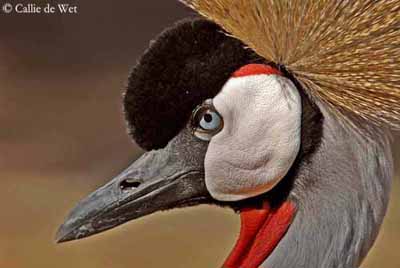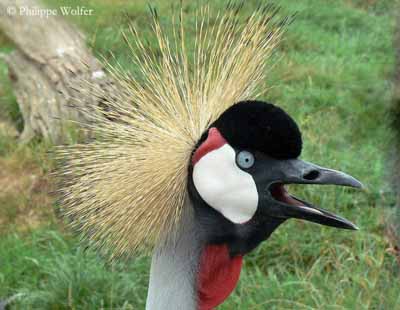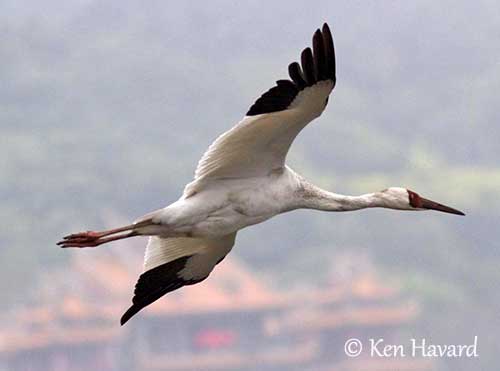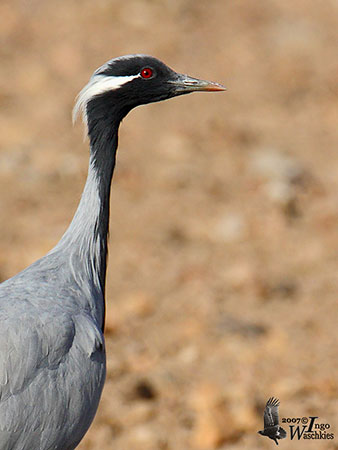
Text by Nicole Bouglouan
Photographers:
Audevard Aurélien
OUESSANT DIGISCOPING
Beamonte José Luís
Pájaros de España
Jean Michel Fenerole
Photos d’Oiseaux du monde
Garvie Steve
RAINBIRDER Photo galleries
Grey Tom
Tom Grey's Bird Pictures
Ken Havard
My Bird Gallery & Flickr gallery 1 & Flickr gallery 2
Ingremeau Patrick
TAMANDUA
Jean-Claude Jamoulle
A la rencontre des Oiseaux
Merigan Tom
Tom Merigan’s Photo Galleries
Moul Bob
Nature Photography
Niraj V. Mistry
Photo Galleries
Ingo Waschkies
My bird pictures on Pbase
Callie de Wet
GALLERY
Philippe et Aline Wolfer
GALERIE
Bouglouan Nicole
PHOTOGRAPHIC RAMBLE
Sources:
HANDBOOK OF THE BIRDS OF THE WORLD Volume 3 by Josep del Hoyo-Andrew Elliott-Jordi Sargatal - Lynx Edicions - ISBN : 8487334202
L’ENCYCLOPEDIE MONDIALE DES OISEAUX - Dr Christopher M. Perrins - BORDAS - ISBN: 2040185607
BirdLife International (BirdLife International)
International Crane Foundation
Wikipedia, the free encyclopedia
CREAGUS@Monterey Bay (Don Roberson)
FAMILY GRUIDAE
Cranes of genera :
Grus, Antigone, Leucogeranus and Balearica
Cranes are large terrestrial birds, often seen in wet areas. But their large wings allow them to fly easily. Most of these birds are migratory, and travel long distance to reach their wintering or breeding grounds. Some of them are able to fly above the high mountains of the Himalayas, others cross wide deserts.
More than half of them are threatened, with some species listened as Critically Endangered or Vulnerable.
These large birds are very sensitive to human disturbances and degradation of the wetlands for agriculture expansion.
Cranes are large birds. From the Demoiselle Crane which is the smallest species with 90 centimetres tall, to the largest Sarus Crane with 176 centimetres, all species have long legs and neck, mainly grey or whitish plumage, and conspicuous head pattern.

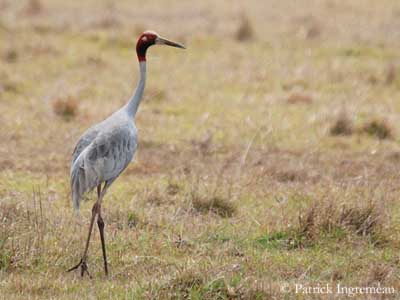
But some of them, and especially the genus (formerly)Anthropoides, do not have head pattern.
Both Demoiselle Crane and Blue Crane have feathered heads, but if they do not have bright patches of red bare skin, they have elongated feathers on the ear area, giving them a peculiar look. They have shorter bills because they forage in drier habitats and do not dig into the soil but only peck at the surface. In addition, they have shorter toes, allowing them to run easily on these dry grounds.
The secondary flight feathers are elongated almost to the ground, making these birds very elegant.
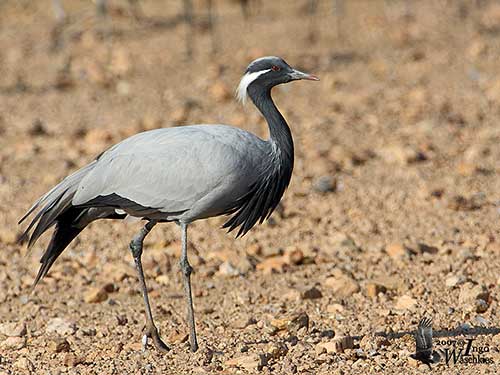
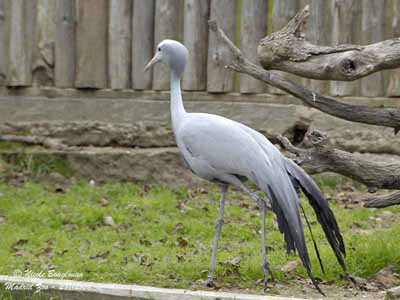
The cranes of the genus Balearica are very different from the other species. The Grey Crowned Crane and the Black Crowned Crane, so similar, shows a conspicuous golden crest forming a crown on the head top. The head pattern varies with more or less red-coloured cheeks, different wattle size, and grey or black neck. Both have relatively short bills and rarely dig into the soil, preferring to peck at the surface. However, they have longer rear toe, allowing them to grasp the branches and perch in trees.
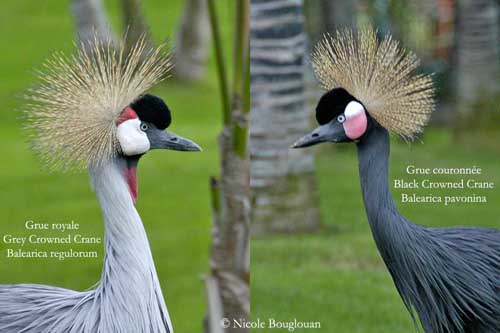
Only one crane’s species was included in the genus Bugeranus. The Wattled Crane is the only one showing prominent feathered wattles and could be closely related to the former genus Anthropoides by the elongated secondary flight feathers. But this crane is a monotypic species and considered sufficiently distinct. It is the only crane with entirely white neck.
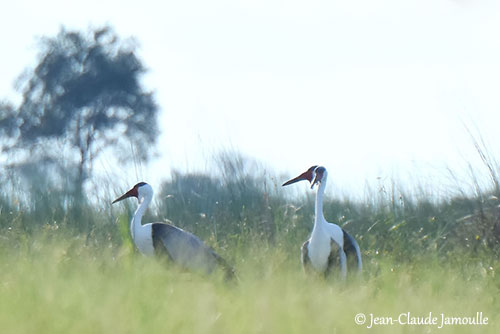
And finally, the genus Grus includes the largest cranes. All have long bill and toes, allowing them to forage in wetlands and to dig into the soil for preys. All these species show red patches of bare skin on the head, as well on the crown as on the face or upper neck.
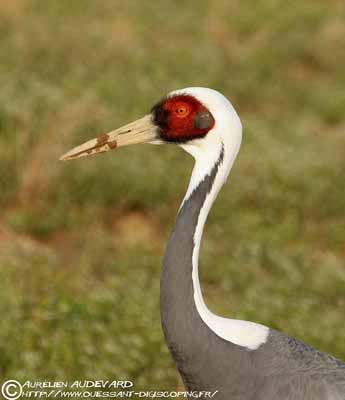
In all species of all genera, both sexes are similar with the male slightly larger than the female. The eyes are from pale blue in Balearica, to red, red-orange or pale yellow in other species.
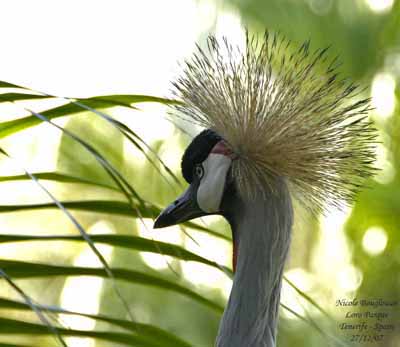
The chicks are covered in pale yellow down above and greyish-white underparts.
The juveniles usually show brownish head and neck, and the body plumage varies from grey to brownish-grey. The eyes are often dark brown and become paler little by little.
Immatures resemble adults but lack the facial pattern or the elongated feathers of the adults.
They are sexually matures between 2-3 and 5-6 years according to the race, but these birds are long-lived species.
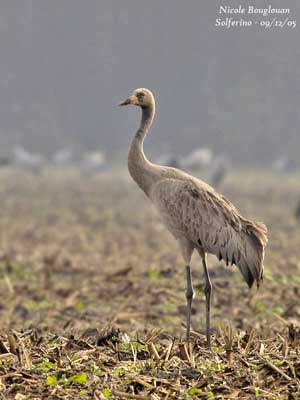
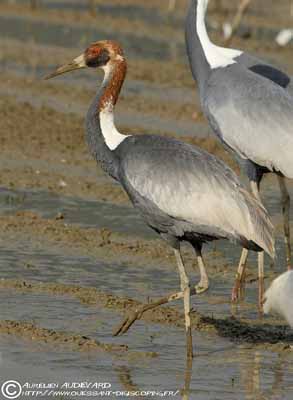
Except the cranes of former genus Anthropoides which frequent drier habitats, and both species of genus Balearica which are more arboreal, all cranes’ species prefer various types of wetlands, from shallow marshes and wet meadows, to ponds and lakes’ margins. They forage, roost and breed in these habitats. The nest is on the ground, among reeds and aquatic vegetation, and above the water level, with open wet area around the nest-site for better view. Some of them can be seen at high altitudes in summer. During the drier season, they frequent upland areas. The Black-necked Crane occurs between 2900 and 4900 metres of elevation.
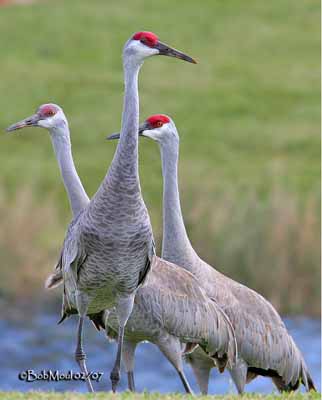
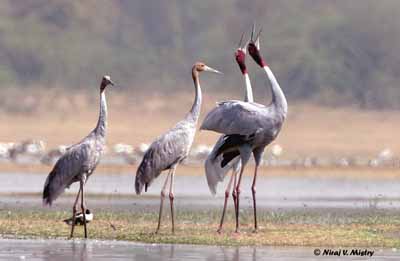
During the migrations, they make stopovers in croplands or fallow fields and wetlands.
On the wintering grounds, they can frequent coastal regions where they find marshes, brackish bays, ricefields and estuarine mudflats, but also pastures and cultivated fields.
Cranes feed on wide variety of plant matter and animal food. In upland areas, they find seeds, leaves, acorns, nuts, berries, fruits and waste grain. But they also catches worms, snails, grasshoppers, beetles and numerous other insects. They can take snakes and lizards, small mammals (mainly rodents) and small birds too.
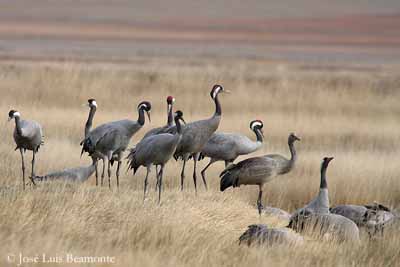
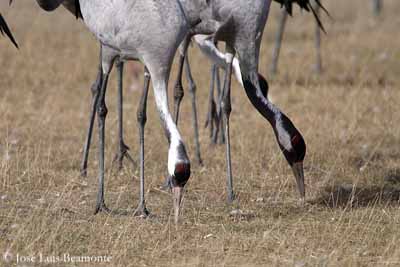
The cranes which forage in wetlands feed on tubers, roots, bulbs, rhizomes, stems and seeds of aquatic plants, and also molluscs, crustaceans, frogs, fish and aquatic insects.
The long-billed birds such as Siberian, Wattled, Sarus, Common, Brolga and White-naped cranes dig and excavate tubers and roots from the muddy soils of wetland areas.
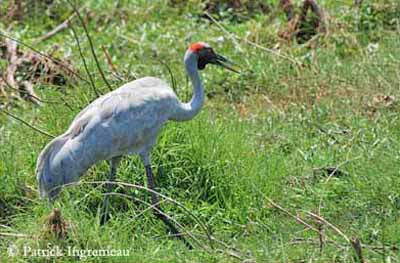
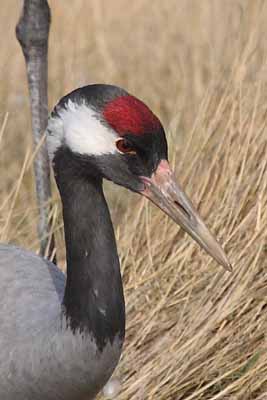
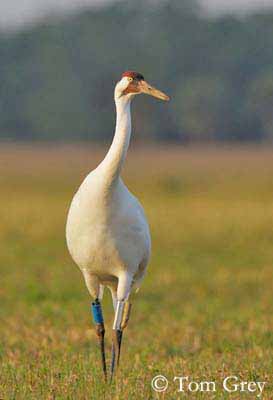
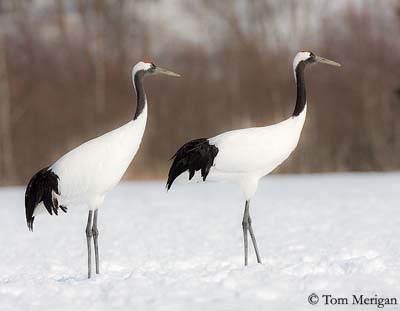
Both Balearica and former Anthropoides species and Sandhill, Hooded and Black-necked cranes which have shorter bills graze as geese. They walk with lowered head, pecking at the ground for insects and seeds.
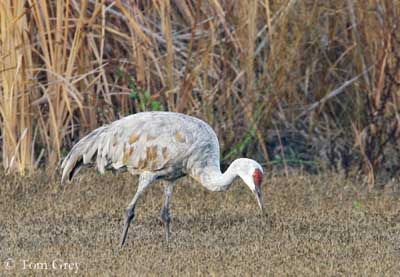
Towards the end of the wintering period, the cranes perform social interactions within the groups, in order to select a mate or to strengthen the pair-bonds within existing pairs. Threat displays are observed, to establish or reinforce some hierarchy within the flock.
Displays similar to those used in courtship occur on the wintering areas as social behaviour between them and within the family groups.
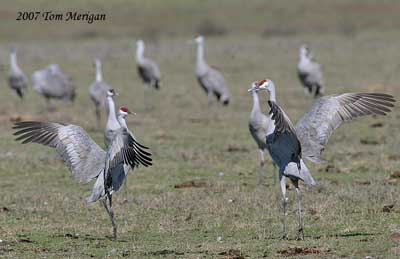
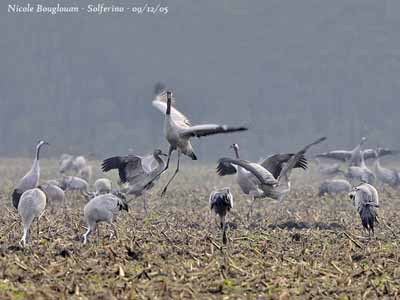
The territories are established soon after the arrival on the breeding grounds. Cranes often return to the same nesting-site year after year. The size may vary according to the species and to the range. The pair becomes territorial and defends its area through unison calls, threat postures and attacks at intruders or rivals.
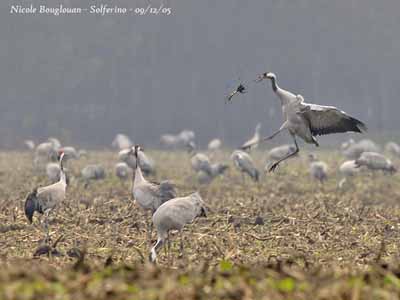
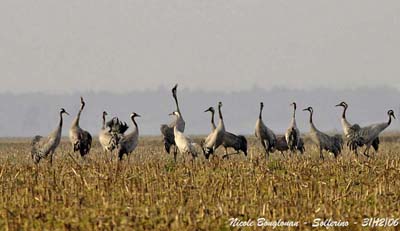
The new pairs engage in long dances before mating. These displays are often spectacular. The birds raise the wings and bow, jump, run, and toss pieces of vegetation into the air. These displays are more frequent in new pairs, but they also strengthen the pair-bonds in established pairs.
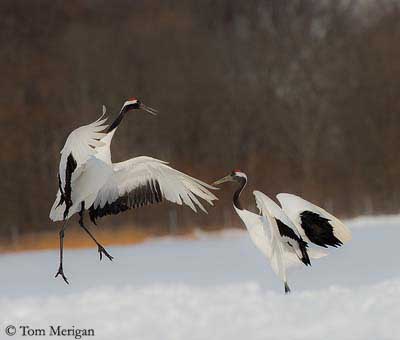
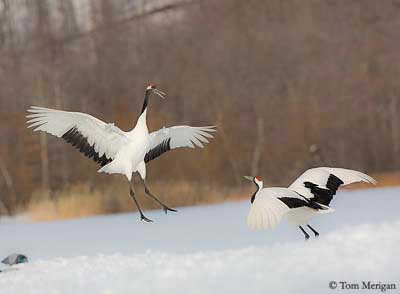
Before mating, one member of the pair raises the bill upwards with the body arched forwards, and utters a low purr-like call. If the other bird does the same display, the male circles the female with exaggerate steps. The female spreads her wings and the male starts to approach. Copulation occurs and then, the male jumps forward over its mate’s head, and some threat display occurs for a few seconds, before both mates engage in mutual preening.
The cranes copulate repeatedly during several weeks before the laying.
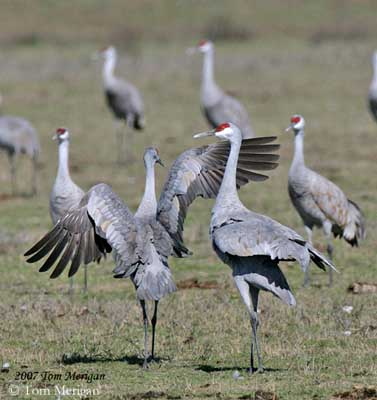
They use different types of calls to communicate, from soft contact calls to trumpeting far-carrying sounds over the territories.
The crowned cranes give soft honks, whereas the former Anthropoides have raspy and low voices. The members of genus Grus give high-pitched and loud calls. The Siberian Crane is the only one to utter clear, flute-like notes.
The nestlings give low, purring calls to maintain contact with their parents. The food-begging call is a soft peeping. They learn the calls during their first year of life.
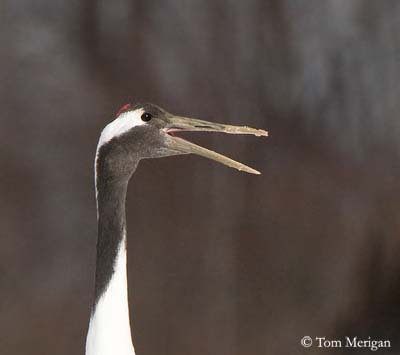
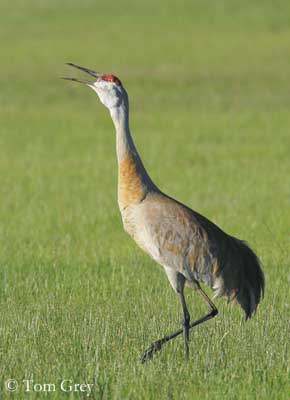
The special duets of the mating pairs are penetrating. Named “unison calls”, they last a few seconds or up to one minute, and are often repeated during the day. In established pairs, these duets are co-ordinated and highly synchronous. This call is used as advertising territorial call and as response to some threats. Different postures are used by the cranes during these calls, such as bill pointed upwards or held horizontal and raised wings.
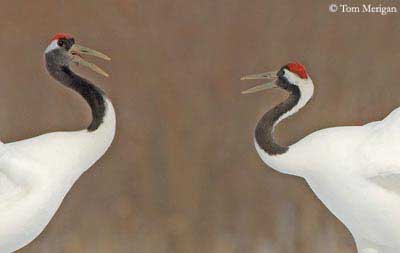
Cranes breed usually in densely vegetated wetlands above surrounding water, with some species such as the Demoiselle Crane and the Blue Crane nesting in drier habitats, the latter near water. Both sexes participate in nest building.
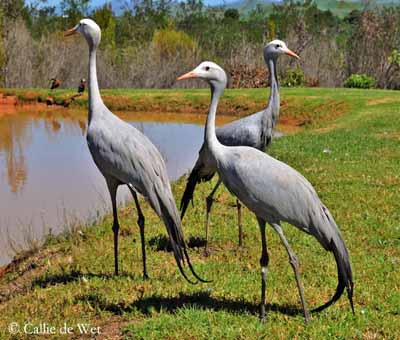
The nest is on the ground and is a very simple structure, made primarily with reeds and sedges. In drier habitat, pebbles, gravels and small stones can be added to some vegetation.
Two eggs are laid directly on the ground. Both adults share the incubation during about one month, between 28 and 36 days according to the species.
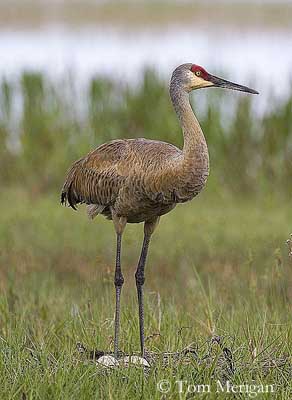
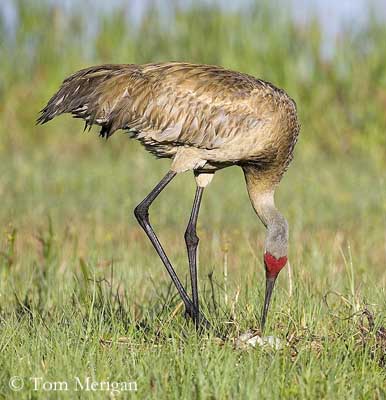
At hatching, the chicks are covered in pale yellow to brownish down above, and pale grey below. They are fed by both parents and grow very quickly. The parents feed them immediately at nest, carrying food items and presenting the food by holding it at the tip of the bill, or even by dropping the food before them. They follow the adults to the nearby foraging grounds very soon after hatching.
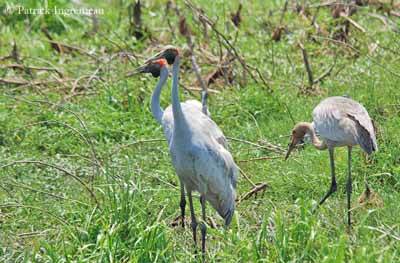
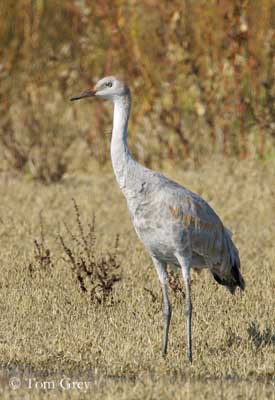
The adults care for the young through the entire fledging period which can vary according each species, but those breeding in upland areas have shorter fledging period, about 50-90 days, whereas the species breeding in wetlands need about 85-100 days. The Wattled Crane has the longest fledging period with 90-130 days.
The juvenile cranes remain within the family group until the following breeding season. They are sexually mature between 2 and 6 years.
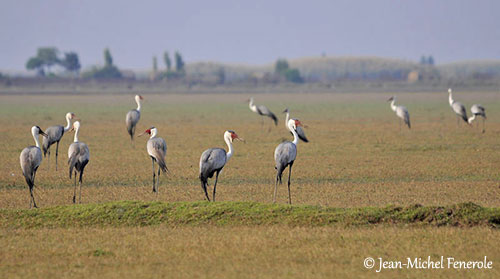
Most cranes are migratory. These large birds fly easily thanks to the powerful wings, but they need to run on the ground into the wind to gain speed before to take flight. Once in the air, they fly with deep, strong wing beats, and can use the thermals for soaring. They land with dangling legs and alight in standing stance on the ground or in shallow water.
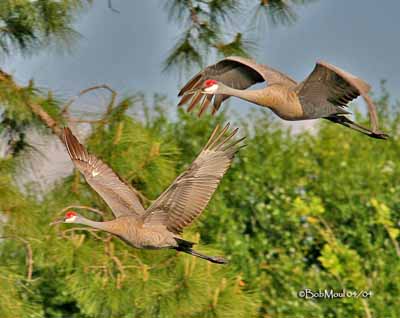
Some species travel at great height, flying between the high mountains of the Himalayas between 5000 and 8000 metres of elevation. Others cross the wide deserts of Middle East and North Africa.
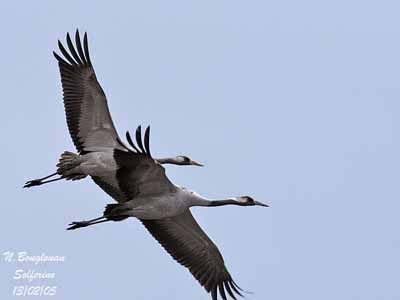
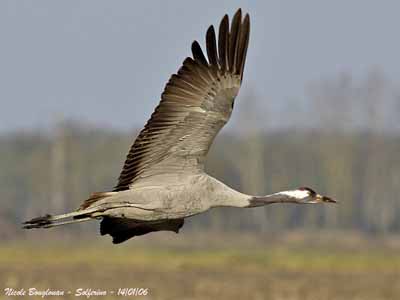
They usually fly in large flocks in V formation. They take turns to lead the group. From time to time, the first bird leaves the place to another, and takes again a more modest rank in the flock.
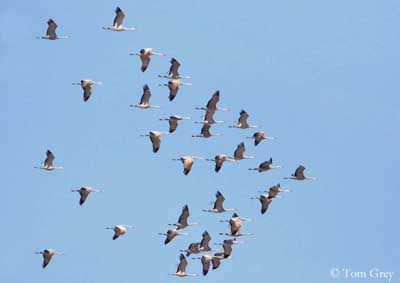
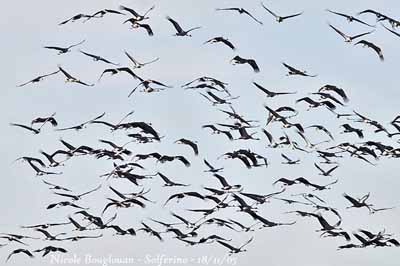
Once arrived on the wintering grounds, the cranes gather in huge flocks but the family groups remain together within the flock. The young birds glean close to their parents and walk slowly while pecking at the surface. They fly, feed and roost together. Outside the breeding season, the cranes are gregarious birds.
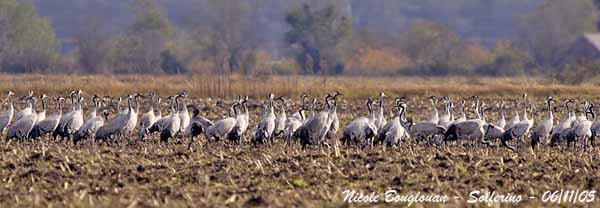
Some species such as the Grey-crowned and Black-crowned Cranes, the Blue Crane, Wattled Crane, Sarus Crane and the Brolga, perform local and seasonal movements. This is typical of the lower latitude species.
Other cranes such as the Demoiselle Crane in Northern Africa and the Sandhill Crane in Cuba, Florida and Mississippi also perform short movements.
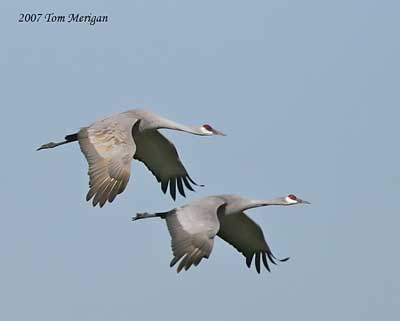
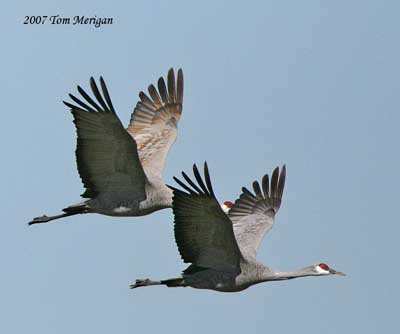
The northern populations are migratory. Their routes stretch thousands of kilometres, crossing large deserts, high mountains and other obstacles. They can spend several days or weeks building up fat reserves and integrating again the life of the flock after the nesting period.
They perform flapping flight in large circles and rise into the air helped by the thermals. At about 2000 metres, they extend their wings and soar in V formation southwards, propelled by the winds. They repeat this cycle when they loose height, in order to reach again 2000 metres and soar again. If they have to fly over the water, they perform flapping flight in V formation. The young birds remain close to their parents and learn the migration route. They utter continuously contact call between them, and these sounds can be heard from the ground, indicating their presence in the sky.
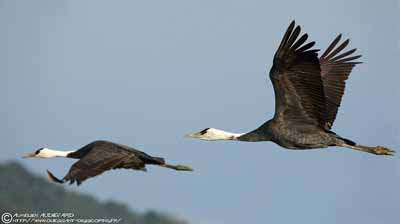
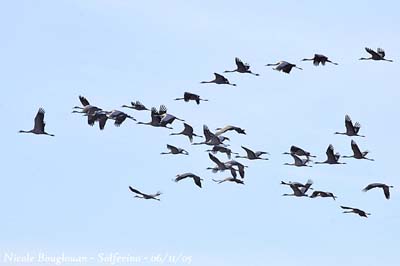
The Common Crane performs an impressive migration from Central Eurasia, flying over the Himalayas at about 10 000 metres. The Sandhill Crane from east Siberia has the longest migration, moving east across the Bering Sea into North America and flying southwards as far as northern Mexico.
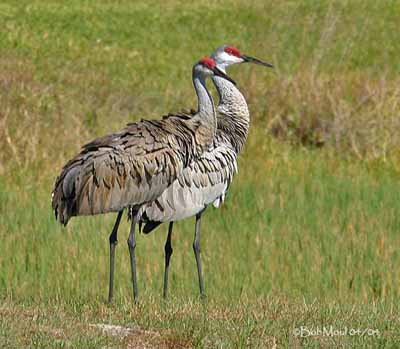
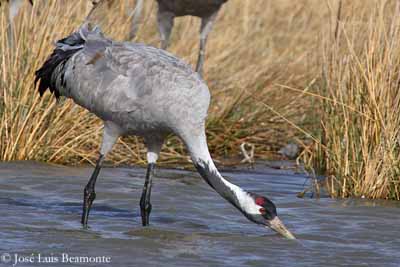
Cranes live on all the continents, except South America and Antarctica.
They are threatened by habitat loss, and mainly by the drainage of the wetlands for agriculture expansion. Overgrazing is also a threat, because the livestock destroys nests and eggs on the ground.
Collisions with power lines, hunting, use of pesticides, poisoning, human disturbances, predation of eggs and chicks, flooding by dam’s construction, fires, and illegal pet-trade for some of them, all these threats have involved serious declines in several species.
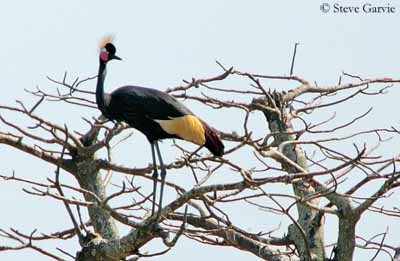
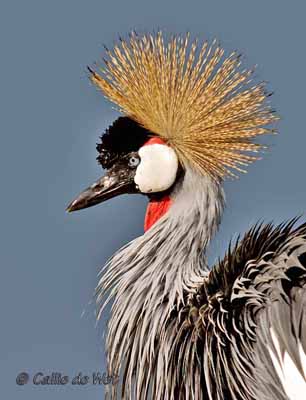
Four species are evaluated as Least Concern: Brolga, Common Crane, Demoiselle Crane and Sandhill Crane.
Eight species are Vulnerable: Black-crowned Crane, Black-necked Crane, Blue Crane, Grey Crowned Crane, Hooded Crane, Sarus Crane, Wattled Crane and White-naped Crane.
Two species are Endangered: Red-crowned Crane and Whooping Crane.
One species is Critically Endangered: Siberian Crane.
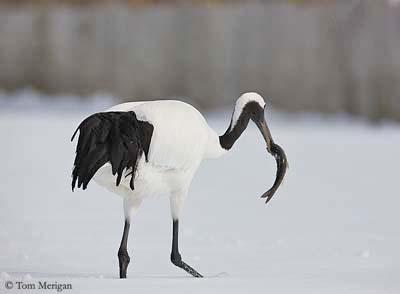
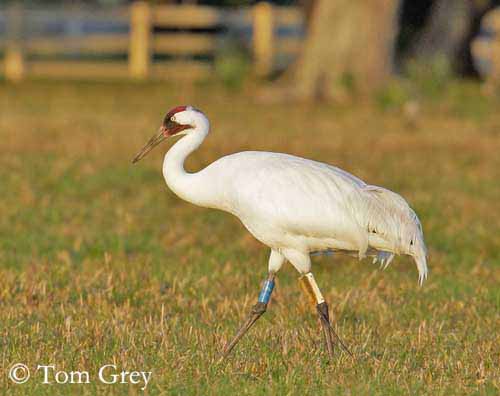
Conservation and protection programs are on their way or in progress, in order to protect the habitat and the birds. Captive-breeding programs are active, with reintroduction of birds in wild. This is the case of the Whooping Crane in North America. This species has small population and restricted range.
Several feeding stations are active, especially in Japan. The cranes are fed every day with fish and seeds. But the high concentration of birds involves the risk of diseases.
Cranes are protected by the laws in most part of their range, but some populations have suffered large declines and have not yet recovered good numbers.
Considerable efforts must be done in order to protect more actively these beautiful birds.
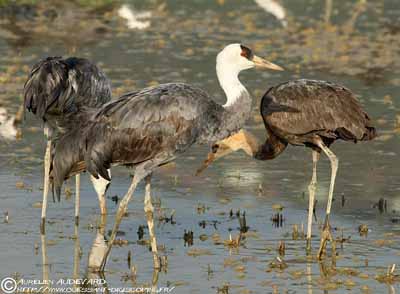
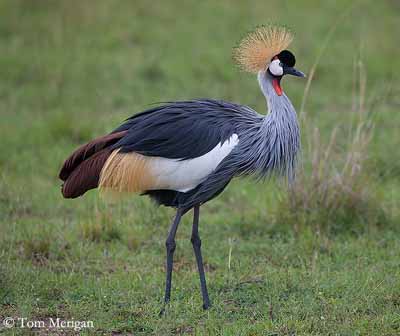
Cranes are often mentioned in mythology, legends, poetry, literature and religious traditions. In China, they symbolize the longevity. The Red-crowned Crane symbolizes happiness, good luck and long life in China, Korea and Japan. Several cranes are national birds in their main country and appear on the Coat of arms.
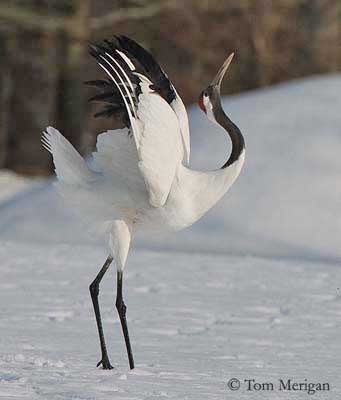
Their beauty, dances, social behaviour, voice and flight, including the migrations make these birds very important for humans and often mentioned in symbolic of several regions and countries.
